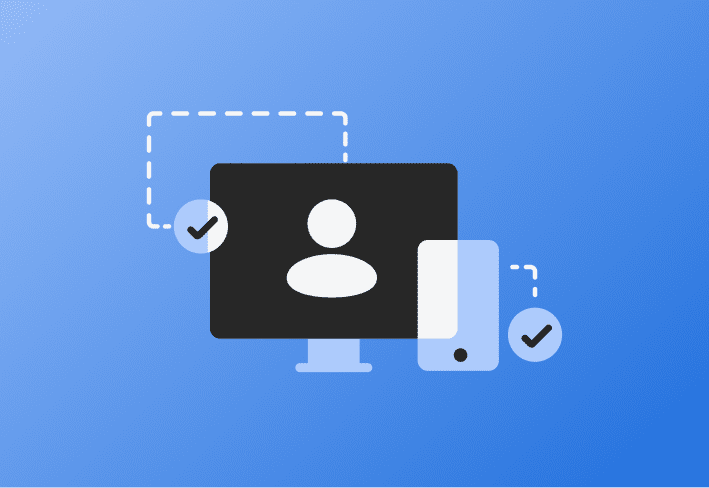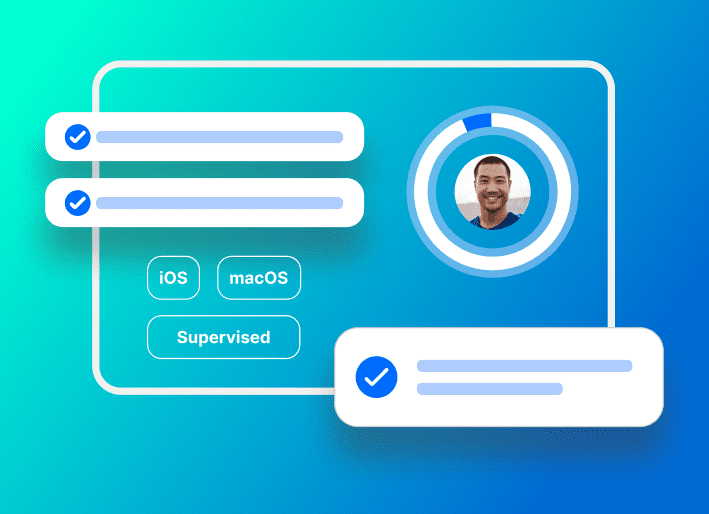The Principle of Least Privilege focuses on providing users or systems only the access they need — no more, no less — to perform their designated duties. Implementing this principle is like establishing a security clearance system, where rights and privileges are meticulously allocated based on roles and responsibilities.
The Principle of Least Privilege (PoLP) is a security practice where every system component operates with the least authority required to carry out a task. These privilege restrictions deter users from accessing sensitive information or critical sections of the system that aren't necessary for their jobs.
Consider Principle of Least Privilege like a school — access to all classrooms depends on job functions. The necessary access should be granted with consideration of the tasks each employee must carry out in their role.
The role of a janitor (akin to an admin) requires universal access, or in other words, all the keys to each classroom. It would be impractical and time-consuming if the janitor had to request a key each time a classroom was cleaned.
On the contrary, a teacher (equivalent to a standard user) needs a key only to their designated classroom, based on their job role and responsibilities. If every teacher had the same level of access as the janitor, gaining access to classrooms not needed for their role could significantly compromise the school's security and accountability. This could result merely from the inflated number of employees with broader access than required.
Limiting users' access rights mitigates the potential for damage (either through accidental misuse or deliberate abuse of privileges). Moreover, if a user's account is compromised, the negative impact or damage that can be done is limited to only the user account's privilege.
Benefits of Principle of Least Privilege
Why are we fans of the Principle of Least Privilege as a top-down administration technique? Let’s talk about some fundamental bennies:
Enhanced security
By minimizing the levels of access granted to each user, we significantly reduce the risk posed by potential security threats, such as human error, phishing, and malware. An individual given only limited, necessary access will be less of a target for breach attempts. Moreover, if a user's credentials were to be compromised, the potential for destructive activity would be confined within that user's narrow scope of access. Consequently, the extent of a possible breach is drastically limited, reducing the overall damage.
Botnetting and malware threat mitigation
Reducing the spread and impact of botnetting and malware is another booming advantage. Many forms of malicious software need higher privileges to inflict damage, which can be a barrier to such activity if the PoLP is appropriately implemented.
Regulatory compliance
Adhering to the Principle of Least Privilege (PoLP) is not merely a recommended best practice; it's a prerequisite dictated by several regulatory standards. Regulations like GDPR, PCI DSS, and HIPAA mandate the implementation of PoLP to establish appropriate controls over data access. This is crucial in safeguarding sensitive information and maintaining the integrity of systems. Therefore, compliance with these necessary regulations often involves strategically applying the least privilege principle. It also prepares businesses for SOC 2 audits, further fortifying their stance on cybersecurity and promoting confidence and trust among stakeholders in the ecosystem.
Simplifying troubleshooting & maintenance
Fewer people can make system changes when the principle of least privilege is implemented. This means that when the system breaks down or behaves abnormally, the list of suspects is much smaller, making problem-solving quicker and more efficient.
What does Principle of Least Privilege look like?
PLoP requires detailed upfront planning and continuous management to ensure employees can access the necessary resources for their job requirements without compromising security. To successfully implement PoLP, you must reorganize your entire administration structure to permanently establish the least privilege for each defined role in your organization as the absolute default.
Without getting too in the weeds, an overall implementation strategy looks like this:
Discover all Admin and Local Admin Privileges.
Inventory all your devices and software.
Monitor privileges and learn their usage.
Replace privileges with automation policies.
But as they say — begin at the beginning.
Perform an overhaul privilege audit of your ENTIRE environment. Remember, you can only protect what you can quantify.
After permissions are established, assign a job role to routinely audit and review existing privileges. We all know that auditing falls between the cracks if no one is given the responsibility, so make sure to find a home for the recurring task and document the expectations to the appropriate role.
In a successful PoLP practice, the desired automation policies focus on RBAC in day-one provisioning for your Active Directory, Identity provider, and other downstream access entities.
What is RBAC?
RBAC stands for Role-Based Access Control. It's a system for organizing and managing user permissions and access to an IT environment based on their roles within the organization.
Under RBAC, instead of giving specific users access rights, users are assigned roles (such as "Manager," "Accountant," "Engineer," etc.), and those roles are granted the permissions needed to perform certain operations. Users are then assigned one or more roles, which allow them the privileges necessary to perform their jobs.
You are starting to see how much of the work for this structure must happen upfront. You need executive, departmental, and universal buy-in to what job roles exist within your organization, their access needs, and a responsibility assignment matrix of what tasks and responsibilities are tied to them.
As always, automation is KING, and these philosophies are most effective with an all-in approach and total structural input from your universal population. (Employee tasks and responsibilities survey, anyone?)
Apple cybsersecurity best practices
Trying to stay on top of cybersecurity for your Apple device fleet? Let SimpleMDM help. From our guides on Apple locks and patching Macs to our deep dive into the macOS Security Compliance Project, we'll help you stay on top of all things cybersecurity for your Apple devices.
Principle of Least Privilege FAQs
What is PAM?
PAM stands for Privileged Access Management. It refers to solutions designed to secure, control, manage, and monitor privileged access to an organization’s assets.
PAM provides special security measures for privileged accounts with unique permissions beyond those of a standard user. This can mean accounts with access to sensitive information or the ability to make significant changes to a system.
The aim is to minimize the potential damage if these accounts fall into the wrong hands or are otherwise abused, helping to prevent data breaches and other cybersecurity incidents.
What are the steps of PAM?
The actionable steps of PAM include:
Define privileged access and accounts.
Discover privileged accounts continuously.
Manage, protect, and control.
Monitor usage.
Investigate abnormal behavior.
Respond to incidents.
Review and evaluate privilege access controls.
What is Zero Trust?
Zero Trust Management Theory is a security model built on the belief of “never trust, always verify.” The crux of this theory is that no one and nothing should be trusted by default, whether inside or outside your organization. Every access request should be thoroughly validated before access is granted.
All users, devices, and systems must be verified and authenticated before accessing applications and data, whether on the network or remotely. This approach encourages using security measures like multifactor authentication, least privilege access, and continuous monitoring, regardless of the user's location.
Zero Trust vs. Principle of Least Privilege:
Zero Trust and the Principle of Least Privilege are both ways to limit access to valuable data and systems, but they operate on slightly different principles.
PoLP ensures that users have only the minimum necessary access, while Zero Trust is about constantly verifying that access.
PoLP restricts what you can reach, while Zero Trust continually checks that you are who you claim to be.
PoLP can sometimes inadvertently grant excessive access if the minimum necessary access is too high.
Zero Trust can be seen as overly stringent, potentially slowing workflow with constant verification.
What is JIT?
JIT stands for Just in Time Access. Just in Time (JIT) Access Management is a security model that follows the Principle of Least Privilege (PoLP) by granting temporary, time-bound access to critical resources only when needed.
Instead of users having constant access to sensitive systems or data, they are granted access only for a limited period and only when it's required for them to do their job. Once the user completes the tasks, the access is automatically revoked. This type of management uses repeated, manual human resources from administrators to execute. (This creates a lot of uncategorized work for the administrators responsible for granting users access per request.)
What is RAM? (Responsibility Assignment Matrix)
A Responsibility Assignment Matrix (RAM) is a project management tool that identifies the role of each member in a project or task. It outlines the level of authority and responsibility that each person or team holds in a specific project task or deliverable.
What is Botnetting?
Botnetting, often shortened to “Botnet," is a term used to describe a group of computers or devices that have been infected with malware and are now controlled remotely under a “bot-herder” or “botmaster.” These infected devices, known as “bots” or “zombies,” can be commanded to perform malicious tasks such as distributing spam emails, carrying out denial-of-service attacks, or spreading malware without the device owners' knowledge.
Need help building some security? With tools like SimpleMDM, managing granular-level access can be simple. SimpleMDM provides comprehensive control over your resources, making implementing the PoLP across your systems simple, accessible, and pretty damn quick. Start a 30-day trial of SimpleMDM today!



